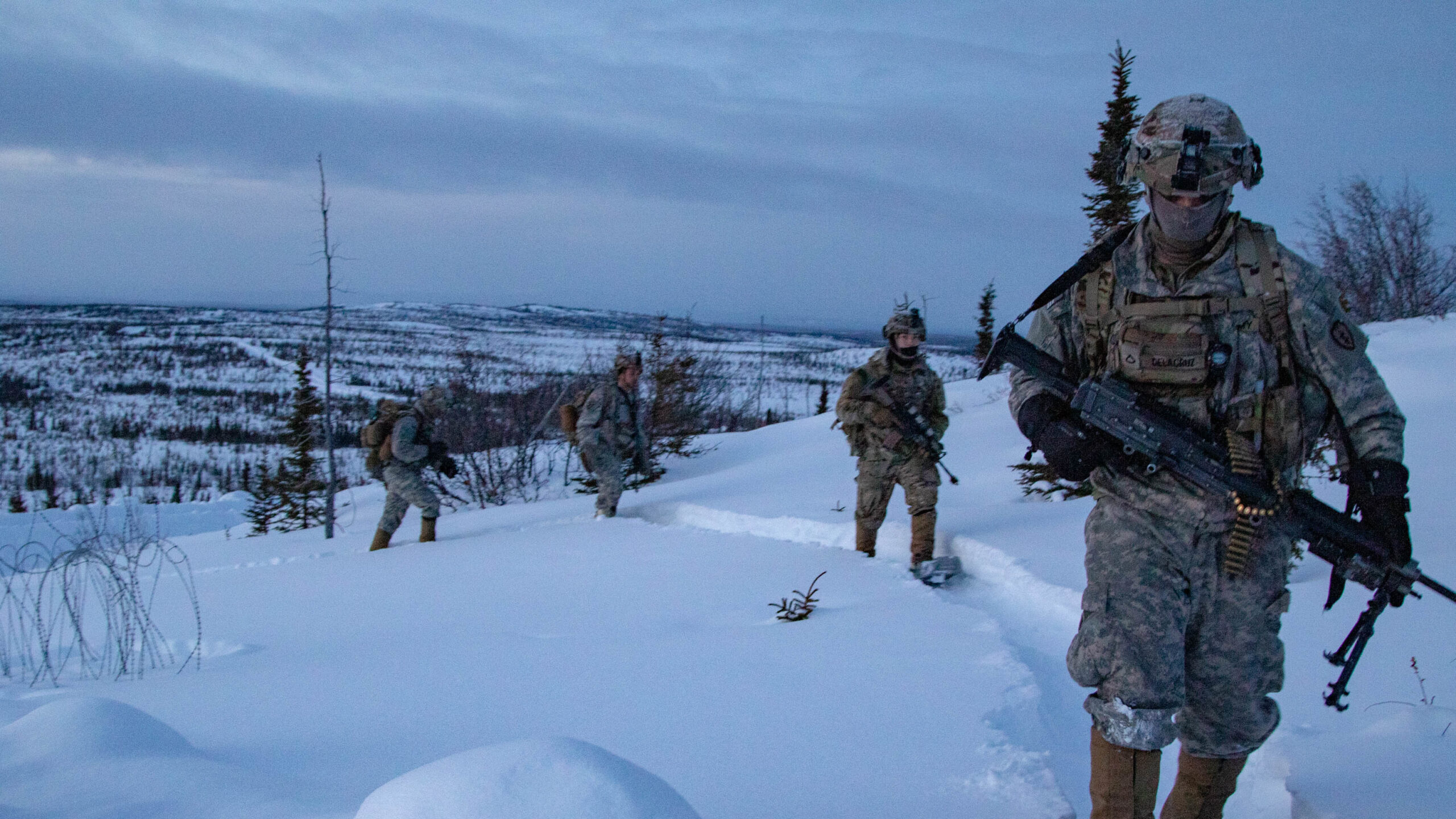
Soldiers from the 1st Stryker Brigade Combat Team, 25th Infantry Division, US Army Alaska conduct reconnaissance in Donnelly Training Area March 22, 2022 during Joint Pacific Multinational Readiness Center 22-02. (Staff Sgt. Christopher Dennis/US Army)
WASHINGTON: The US Army officially re-activated the 11th Airborne Division in Alaska today, as the service seeks to sharpen its Arctic fighting capabilities and to give soldiers stationed in the north a “common unit identity,” the Army’s top general said.
The reactivated 11th Airborne Division replaces US Army Alaska, which was somewhat confusingly part of the jungle fighting force of the 25th Infantry Division in Hawaii.
“Experience has told us that units that have a common unit identity is a source of pride is extremely important in the history of a unit in the patch matter because this is what they do and this is who they are,” said Gen. James McConville, Army chief of staff.
The move is an attempt to raise morale for a unit that’s been coping with a rash of suicides: 11 in 2021 and seven the year before. In early May, Army Secretary Christine Wormuth told lawmakers that “some of the soldiers there don’t feel like they have a sense of identity or purpose around why they’re stationed there.”
Army leaders said they hope that being part of a historic unit will cultivate that sense of identity.
The 11th Airborne Division was first activated in 1943 and fought against the Japanese in the Philippines during World War II. The unit took part in several combat jumps, including for an operation to free over 2,100 civilian prisoners from Japanese forces in 1945. The unit spent the post-war period in Okinawa until 1949 and later fought in the Korean War, deactivating in 1958. It later reactivated as a test unit for air assault tactics in 1963 before deactivating again in 1965.
With US Army Alaska becoming the 11th Airborne, the 25th ID’s first Stryker brigade will become the new division’s 1st brigade combat team. The 25th ID’s 4th infantry brigade combat team (airborne) will reflag as the 2nd brigade combat team, 11th Division.
“Their focus will be on dismounted and Arctic mobility and capabilities to sustain operations in the Arctic extreme cold weather,” said Maj. Gen. Brian Eifler, the 11th Airborne’s commander.
The transition from a Stryker brigade to the infantry brigade means the division will shed its Stryker vehicles starting this summer, McConville said. Strykers reportedly struggle to work in the extreme cold of the Arctic and the unit will instead use the Army new Cold-Weather All-Terrain Vehicle. Fiscal 2023 budget books show the service plans to award a CATV contract this month, with the first vehicles set to be delivered in April 2023.
McConville said the Army will also buy more cold weather gear for the soldiers in Alaska over the “next year or two” and analyze what aircraft it needs in the region.
“We have aircraft here, but is that the best mix of aircraft to support a potentially an air assault capable brigade?” McConville said.
In terms of training, Eifler said the division’s training will evolve to do more airborne and dismounted operations, and far less with Strykers.
“We’re gonna take advantage of the terrain and to take advantage of the weather that’s here to make sure that they are the most highly trained, physically fit Arctic warfighters that we have in the Army,” McConville said.
Move over FARA: General Atomics pitching new Gray Eagle version for armed scout mission
General Atomics will also showcase its Mojave demonstrator for the first time during the Army Aviation Association of America conference in Denver, a company spokesman said.


























